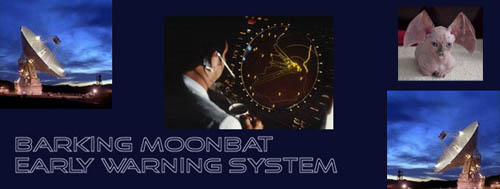
Reporters and radiation
Radiation in my area is also high, and it’s 100% organic. We happen to live on the radon hotspot of just about the entire planet. Naturally the government hides this fact, mapping out the entire country into just 3 zones, with the highest Zone 3 areas rated at >= 4 picocuries/liter. So their metric is worthless, considering some areas actually have 10 to 100 times that rate. 1 pCi/L = 37 Bq/m^3, so a Zone 3 rating actually means a constant exposure rate of >=148 Bq/m^3 (becuerels per cubic meter). Most of this stuff comes from hard rock; either from glacial till brought down from Canada in the last ice age, or from living above the exposed hearts of old worn down mountains like we do here in western NJ. Or both!
Oh, and those folks who just absolutely insist on granite countertops in their expensive kitchen renos? They are bringing extra radiation into their homes. Granite is radioactive. Granted it’s very slight, but it’s still more radioactive than slate or quartz.
While I agree that there is no “good” level of radiation exposure, like the amount of lead in our drinking water I think a lot of it has been overplayed.
One good thing to know is that many of the metrics used to measure radiation are not directly comparable. This is not just because there are several different types of radiation - alpha particle, beta particle etc - but because the metrics measure different things. Curies and bequerels measure RATE, roentgens, rads and grays measure ENERGY.
http://www.physics.isu.edu/radinf/risk.htm
1 rem = 1 Roentgen = 1 rad = 10mSv (millisievert = one thousandth of a sievert)
The typical American gets about 360 mrem ( or 0.360 rem ) exposure per YEAR; this is 36% of one one hundreth of a Sievert, or 0.0036Sv, or 3.6mSv. So 400mSv/hr is the equivalent of getting an entire long lifetime’s worth (111 years) of radiation in ONE HOUR. It is 40 rad.
Radiation sickness can start after just 75,000 mrad, which is 75rad, though serious poisoning rates are kicked off when several times that much radiation is absorbed.
Bottom line, if my math and my sources are correct (pls follow links and check!): 2 hours exposure at the 400mSv/hr rate would scare the crap out of me, 3 hours and I’d want serious decontamination, 6 hours of it gives you a 50% chance of death without treatment, 24 hours of it and you are done, no matter what treatment you can get.
Those workers at the power plant - the “Fukushima 50” - are all probably going to die. They will be heroes in Japan because this is an honorable form of seppuku for them, giving their lives trying to stop the contamination caused by the place that they work.
one of your links says
exposure to over 100 millisieverts a year is a level which can lead to cancer, according to the World Nuclear Association.
OK, 100mSv/yr is 27 times higher a dosage than “normal”. That’s spread out over a year, giving the body time to work against the cell damage caused. 4 times that rate in a single hour is more than 35,000 times the “normal” annual dosage rate when considered on an hourly basis. While this is not instantly fatal, it is deep in the danger zone IMO.
I think that future reactors should be built out at sea, 100-200 feet below the waves and far above the sea floor. That way they’d be impervious to tsunamis, earthquakes, undersea landslides, getting bumped by ships, and even theft. They could be self cooling just by natural convection, piping the water to the surface to minimize thermal impact on the deep currents. You may have to build nets or armored shields at a distance around them to protect them from terrorism. Either this, or put the reactors where the land is 100% quiescent, like up in northeastern Canada on that bit of shield rock that hasn’t moved in 4 billion years.
Here’s an article you might like Drew.
The oldest ultrasafe reactor is, as one might expect, a Canadian design, the CANDU (Canadian Deuterium-Uranium) reactor. The CANDU reactor utilizes deuterium, or heavy water, as both coolant and moderator. The trick is that heavy water is nearly transparent to neutrons, meaning that low-purity and even unrefined Uranium can be used as a fuel. The reactor simply doesn’t get hot enough for a meltdown to happen. If a coolant leak occurs, loss of heavy water stops the reaction. CANDU reactors are so safe they don’t even feature standard containment vessels. (I once had the pleasure of bouncing Cory Doctorow, who was waxing hysterical over the fact that Canada had not checked its reactors for Y2K problems. “But they’re CANDU reactors,” I told him. “They can’t melt down.” Doctorow was subdued for the rest of the discussion, a rare event, I was assured.)
Those workers at the power plant - the “Fukushima 50” - are all probably going to die.
Probably? Most assuredly they will die. Did you think they were immortal before the Fukushima incident? We all die sometime.
Next entry: Exodus from a nuclear nightmare: Thousands flee. See links.
Previous entry: That was fast!